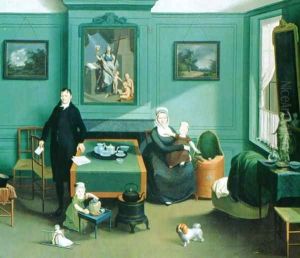Franz Schrank Paintings
Franz Paula von Schrank was not primarily known as an artist, but rather as a German botanist, entomologist, and Roman Catholic priest. He was born on August 21, 1747, in Varnbach, now a part of Bad Birnbach, Bavaria, Germany. Schrank was a well-educated man and initially joined the religious order of the Jesuits, which had a strong tradition of scholarship, before the order was suppressed.
Schrank's work is significant in the field of natural history. He was the first director of the botanical garden in Munich and is credited with being one of the founders of biogeography, which is the study of the distribution of species and ecosystems in geographic space and through geological time.
Over the course of his career, Schrank published a number of important works on botany and entomology. His 'Bayerische Flora' was a significant contribution to the understanding of the flora of Bavaria, and he also wrote extensively on insects, particularly the Lepidoptera (moths and butterflies). His contributions to the field of entomology include the description of several new species.
Franz von Schrank passed away on December 22, 1835, in Munich. While he was not an artist in the traditional sense of painters or sculptors, his scientific illustrations and descriptions of plants and insects are valuable artistic contributions that continue to be appreciated in the natural sciences. His legacy is preserved through his contributions to botanical and entomological literature, as well as the specimens he collected, some of which are still housed in natural history museums today.
